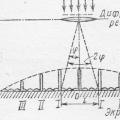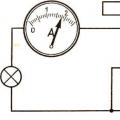In a wide range of plumbing work, drilling is perhaps the simplest and most accessible operation for everyone. As a rule, in production, drilling works are carried out using various drilling machines.
Depending on the tasks performed, these can be the most common single-spindle units, and multifunctional multi-spindle machines with numerical control.
Homemade bench drills
However, we will not be distracted by the description of all kinds of industrial drilling installations, especially since the home craftsman, for whom this article is intended, will hardly be interested in the intricacies of the design of a universal vertical boring and boring machine. But the design of the simplest homemade drilling machine, which can be assembled from improvised material at home, will interest any "handy" master.
 To carry out drilling work at home, in most cases, it is enough to have an ordinary electric drill.
To carry out drilling work at home, in most cases, it is enough to have an ordinary electric drill.
However, when performing work requiring great accuracy or drilling many small diameter holes, which is especially important for radio amateurs in the manufacture printed circuit boards, a drilling machine will be required, since an electric drill will not provide either the required accuracy or the quality of drilling.
Of course, today in any specialized store, many models of various machines are sold, including drilling ones, designed for use in home workshops. However, their cost is considerable, and not everyone can afford such a purchase, especially since with certain skills and desire, the simplest drilling machine can be made independently.
The most common types of homemade drilling machines are:
- Drilling machines based on electric drills
- Drilling machines based on an asynchronous motor from household electrical appliances
Let's consider in general terms the manufacturing technology of each of these machines.
Drilling machine based on an electric drill
Due to the ease of manufacture, electric drill-based drilling machines are most often found in home workshops.
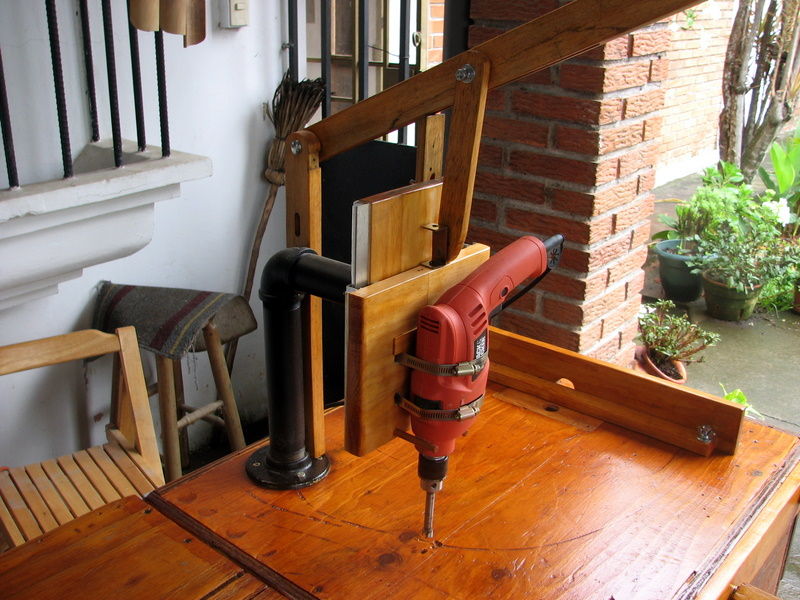
The weight of the electric drill is small, therefore, to make a vertical stand, you do not need any particularly strong materials, it can even be made from boards or chipboard.
The construction of a drilling machine consists of 4 main elements:
- Base (bed)
- Vertical rack or bar
- Feed mechanism
- Electric drill
The choice of the base of the machine, the bed, should be taken especially seriously. The more massive it is, the less vibration will be felt during operation. If you still have an old photo enhancer for developing images on your farm, it can be adapted as a base with a stand after a little modification. In the event that you did not find anything that could be adapted as a bed with a stand, this element can be made from a furniture board with a thickness of at least 20 mm.

When attaching the stand to the bed, it is extremely important to get a right angle, since the accuracy and quality of drilling will depend on this. To the rack with the help of screws, two guides, cut from metal strips, should be fixed, along which the block moves up and down, to which the drill is attached. The block should be made in such a way that the drill can be clamped tightly with the metal clamps.
To reduce vibration, a rubber gasket can be installed between the drill body and the shoe. The vertical movement of the pads with a drill is carried out using a lever. To ensure the convenience of operation, the feed mechanism should be equipped with a sufficiently powerful spring, which could bring the block with the drill to its original position. One end of the spring will rest against the block, and the other against a fixed bar, which should be installed on the rack.
If the drill will not be used autonomously, for greater convenience, you can disassemble its switch and install the on-off button directly on the bed.
Drilling machines based on an asynchronous motor
In many home workshops, there are various electric motors that have survived after the end of the resource of electrical appliances. For the manufacture of a drilling machine, an asynchronous electric motor, which is installed on washing machines drum type.
It should be said that the design of such a machine is much more complicated than the above-considered design using an electric drill. Among other things, the motor from washing machine quite heavy, which creates increased vibration and requires the mandatory installation of a powerful rack.
To reduce vibration, you should position the engine as close to the rack as possible, or select a rather weighty, powerful bed.
However, it should be borne in mind that when the engine is located close to the rack, the design becomes much more complicated, since it becomes necessary to install pulleys with a belt drive. When assembling, it is necessary, as much as possible, to fit all the parts as accurately as possible, since the operability of the machine will depend on this.
To manufacture a pulley structure, you will need:
- Hexagon
- Steel clamping ring
- Two bearings
- Two trimming thin tube, one of which is internally threaded
- Gear
The movable part of the mechanism can be made of a hexagon, a tube of the appropriate size, a clamping ring, bearings, a tube with a threaded internal thread to which the chuck will be attached. The hexagon is an element of the transmission mechanism on which the pulley is put on.
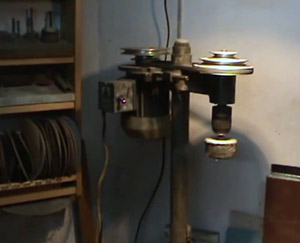 To ensure a reliable connection with a hexagon, deep cuts are made at the ends of the tube. A compression ring and bearings are driven into the tube. It is necessary to ensure that the structural elements are attached to each other very tightly, otherwise, the structure will collapse from vibration.
To ensure a reliable connection with a hexagon, deep cuts are made at the ends of the tube. A compression ring and bearings are driven into the tube. It is necessary to ensure that the structural elements are attached to each other very tightly, otherwise, the structure will collapse from vibration.
To manufacture the adjusting system of the machine, you will need a pipe with cuts of the appropriate size and a gear, the teeth of which must freely penetrate the cuts on the pipe. In order not to be mistaken with the places of the cuts on the pipe and their size, you should roll out plasticine on the pipe and drive the gears along it. The length of the ladder pipe must correspond to the height to which the chuck with the drill is to be lifted. The hexagon shaft is pressed into the slotted tube.
The design described above is rather complicated in execution, and, let's not dissemble, not everyone will be able to make it. Therefore, the easiest way, when manufacturing a machine tool with an asynchronous motor, is to pick up a powerful steel bed and assemble the machine by analogy with a unit with an electric drill. True, it will not be possible to completely avoid vibration, in any case, and it is not necessary to count on obtaining holes of a particularly accurate size when using this unit.
Of course, in this article only general principles making homemade drilling machines, and it cannot serve as a guide to action. Therefore, before proceeding with the assembly of the machine, it is recommended that you familiarize yourself with the drawings of the various designs.
In addition, radio amateurs, who, as a rule, drill holes of an extremely small diameter in printed circuit boards, are advised to assemble these structures in miniature, replacing the electric drill with a microelectric motor. Together with a voltage regulator, the microelectric motor will allow you to get almost perfect holes. An example of the construction of such a machine can be seen below in the photo.
A drilling machine is a unique device that is essential for a home workshop. It allows you not to seek help from specialized workshops, but simply take and carry out grooving work yourself.
Thanks to this, a person saves a huge amount of money on the services of turning specialists.
You can make such a device from scrap materials. Nothing complicated is observed in the process.
All you need to make a home drilling machine is an electric drill or steering rack.
The purchase of industrial units will cost a pretty penny, so it is more advisable to make your own model using drawings with dimensions that are abundant on the Internet.
Before proceeding with the creation of the unit itself, you should perform the planning. This is a crucial step that requires a careful approach and drawing up a drawing. It is necessary to carefully measure and display the dimensions of the future machine on paper. If this is not done, something will definitely go wrong in the work.
It's easy to make a mistake, and the presence of a drawing will not allow you to make mistakes. People who neglect this step in creating a drilling machine with their own hands overpay in the process of making it. What you need to consider while working:
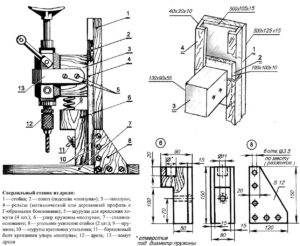
Dimensional drawings.
- Length, width and height of the equipment;
- Aggregate thickness;
- Technical characteristics of electrical equipment;
- Data of the motor that will serve as a drive for your machine;
- Power consumption of energy;
- Grounding;
- The number of consumables.
The drawing will allow you not only to visually understand how to assemble the equipment, but also how it will look exactly. The project will make it possible to more clearly define the amount of production costs.
To assemble such equipment in your workshop, you do not need to have specialized items or electrical equipment. All that is required is 4 main components. First of all, a bed should be selected for the filler machine. It will serve as a powerful foundation for a future grooving device.
After that, we decide on the rotation mechanism. For him, it is better to choose an electric drill.
Tip: Take a drill that is not too old, but not too new. The main thing is that it is in working order, otherwise the equipment can quickly fail.
The third step will be to select a device for feeding revolutions
on the working part from the drill, and also decide on the stand, vertical type. The drill itself is lightweight, so there is no need to look for heavy-duty materials for the stand. An ordinary board or chipboard plate will do.
Tip: An asynchronous motor from an old washing machine is ideal as a drive.
The bed, on the contrary, is selected from those materials that will be stronger. She should keep everything on herself, and also cushion the rattling of the drill itself. It is best to select strong metals so that vibration does not affect the equipment and the accuracy of work. Very well, an old stand from a photomagnifier is suitable as a holder. True, to create a drilling machine with your own hands, you will need to modify it.
Important! The accuracy of the hole to be drilled will depend on the quality of the connection between the rack and the machine bed.
Also, the creator of the home machine will need to use several steel strips to cut the two guide strips. They will help to move the block on which the drill is located. You can use screws to secure them. We take and fasten everything to the rack.
Clamps will help to increase the strength of the drill. It is best to use steel, they can withstand a higher load. To further dampen vibrations, it is best to place a rubber pad between the machine block and the drill. It will help you eliminate the rattle of your home equipment while you work.
For a better understanding, watch the video below.
Drill machine video
The motion feed of the machine is based on a lever. It allows you to safely move the pad with an electric drill in an upright position. A spring will be installed there, which will allow the drilling machine to be maintained at the desired tension.
Choosing and installing a steering rack for a drilling machine
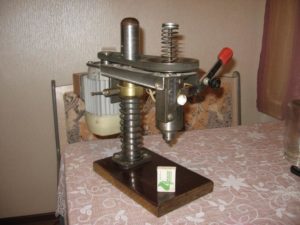
To keep your home equipment working as conveniently as possible, it is best to apply a redesigned steering rack during construction.
If you are going to buy a new one from the manufacturer, prepare a tidy sum,
because it is not cheap at all. A more profitable solution is to choose a used part, best of all from a VAZ 2108.
Tip: As soon as you bought such a spare part, you should carefully inspect it, carry out preventive maintenance and repair if required. Thus, it will turn out to give it a smoother running while working with a drilling machine.
Now let's start making a bed for your future drilling equipment.
- To make the case, you will need to use a drill along with the column. All this should be installed on a table that will serve as a platform for the future drilling machine. The dimensions of the table should be around 20x30 cm.
- A special structure that will hold your power drill is installed on the head of the unit. Bolts are used to tighten it.
- To build the rack itself, you must first select a U-shaped steel profile with dimensions of 30x60x30. Then you need to weld it to a metal sheet with a thickness of 2 mm. In theory, the stand itself must be 6-7 cm higher than the length of the column itself.
- It is best for the machine operator to use the VAZ 2108 steering rack, which was mentioned earlier, as a rod stroke for the machine operator when creating equipment.
- To further increase the rigidity of the entire structure, additional ribs should be installed during installation.
To prevent the operator from having problems starting or shutting down the equipment during operation, a practical system for starting and stopping the drill motor should be considered.
In everyday life, a not very large machine may come in handy, but drilling equipment for working with micro printed circuit boards, as in the photo.
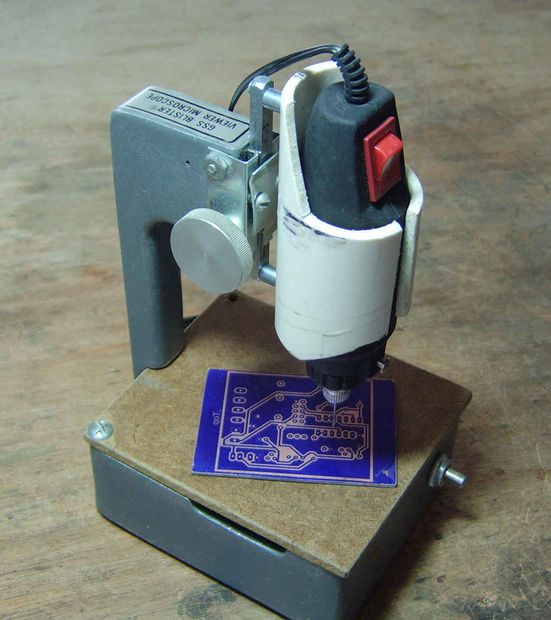
To craft it, the creator will need:
- Micromotor or high-speed motor.
- Special collet for clamping small drills.
- Several wooden blocks.
- The metal profile is U-shaped.
- Retaining ring, which will help to securely fix the engine.
- A mobile platform for the machine, which is created by hand from all kinds of materials found in everyday life.
Important! So that the machine does not end up disappointing you and works accurately and accurately, you should pay special attention to lowering the drill. It should be carried out perpendicular to the board.
In the event that the motor is skewed under some circumstances, the user runs the risk of disabling the drills. During the production of home drilling equipment, you need to carefully monitor the quality of the motor fixation. If it was not installed securely, when the engine is running at high speeds, it will simply be pulled out of the bed. This is fraught with damage to your property and the risk of harm to your health.
How to make a XY table
In a home drilling machine, the role of the coordinate table will be performed by the feed mechanism. And the same table, but for the milling equipment, has a slightly different design. Therefore, it should be considered more carefully.
This equipment is a special manipulator, which is composed of the number of axes required by the user. It is needed to move specialized technological heads of drilling equipment in several directions and planes at once.
Important! To make a milling table at home, you cannot do without the use of several linear-type modules. They must be made of aluminum profiles.
To transfer motion when creating a milling table, you should use a special toothed rack, as well as a reinforced belt. A ball screw will do just fine instead.
To establish control of the coordinate table, the creator will need to use CNC or controllers. Thanks to their installation, the user of the equipment has the opportunity to manage the technical tasks assigned to the machine.
Important! When creating a milling table for a drilling machine, be sure to make a drawing before starting work. This will allow you to clearly understand the algorithm of actions and save yourself from unnecessary mistakes.
The calculation in this case is carried out taking into account technical characteristics the drilling unit itself. The design itself can be either lightweight or with increased strength. And also 2 or 3 coordinates can be used there. First of all, before creating a machine, you should understand its main role in your home workshop. And already from this make a start in the design process and further production.
When everything is ready, you need to make a vice, otherwise you will not be able to fix the part at home, it is strictly forbidden to hold it in your hands. Old Soviet vices made of steel or cast iron can be expensive to purchase. Chinese-made models, not everyone will like it, to the extent of their fragility. Therefore, one of the economical options would be to make them yourself.
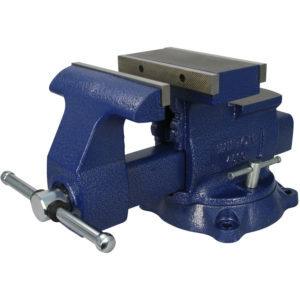
You will need:
- A screw with a thread of 2 cm and a length of 15 cm. There must be a slot in the head of the fastener.
- A special screw with a ring that is used for tightening.
- Hairpins.
A stationary sponge should be made. How to make this element? Use a pine tree to create. It is affordable and durable enough. The board should be grafted onto the worktop.
To make the mobile part of the vise, you need a board 2 cm thick and 1.8 cm wide. The length of the movable jaws for the clamps must be from 50 cm.
All that needs to be done is to cut holes with a diameter of 2.1 cm. In the studs this diameter will be 1 cm. Then the creator simply inserts the studs together with the screws into the finished holes, after which he locks the nuts and tightens them with bolts.
And this is where the production of home vices ends.
When you have created your home drilling machine, be sure to check it out.
Plug the engine into a power outlet and, if you did everything correctly, you have not happened short circuit, there are no unusual sounds for the operation of the unit - you can congratulate yourself on the successful completion of the project.
A homemade machine will allow you to perform simple drilling operations at home and save on the services of auto repair shops or turners.
Video how to make a drilling machine
The only thing - to keep the equipment working as long as possible, do not hesitate and do not be lazy to inspect the working surfaces together with the engine every six months for damage or wear of parts. Identifying the problem in a timely manner will help you save yourself from real trouble.
Drilling work is not particularly difficult and often does not require other equipment, except for a conventional drill. Therefore, in home workshops, a drilling machine may not be available. However, if you have a do-it-yourself benchtop drilling machine, you can breathe a sigh of relief, since some of your worries will be solved by itself.
The purpose of the drilling machine
Sometimes there are situations when an electric or hand drill is not able to provide the desired parameters of the drilled hole. Often in amateur radio practice, you need to make printed circuit boards, where you need to drill many holes that have a small diameter. It is inconvenient to drill holes with a diameter of 0.5-1 mm with a hand or electric drill or a large drilling machine, and the drill may break.
Buying industrial drilling machines is not always economically viable, and then you can make a homemade drilling machine. Many people choose exactly mini drilling machines, because, despite the apparent complexity of the design, they are actually very simple equipment and consist of four parts.

A homemade drilling machine is designed for drilling a through and a blind hole in solid material, for example, reaming, reaming, countersinking, cutting discs from sheet materials and cutting internal threads. Drilling and milling machines can perform milling, surface grinding, bevel milling and horizontal milling.
To perform the above operations, a countersink, drill, tap, reamer and other tools are used. Using special tools and additional tools, you can cut a hole with a large diameter, bore the hole and grind the hole precisely.
Types of drilling machines
Drilling machines are of the following types: single and multi-spindle semiautomatic machines, vertical drilling, jig boring, radial drilling, horizontal boring, horizontal boring, diamond boring. Models are designated by numbers and letters. The first number denotes the group to which the machine is assigned, the second is the type of machine, the third and fourth are the dimensions of the machine or the dimensions of the workpiece being processed.
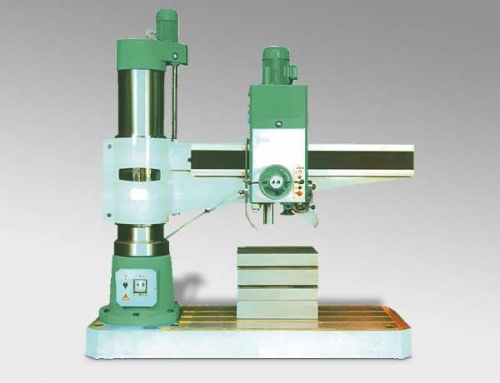
The letter after the first digit means that a certain model of the drilling machine is modernized. If the letter is located at the end, then it should be understood that a different drilling machine was made on the basis of the main model. It is possible to distinguish from all drilling machines such basic types of universal machines: multi- and single-spindle, radial and horizontal drilling.
Depending on the area of use, a distinction is made between special and universal drilling equipment. Specialized machines for mass production and large-scale industry have also found wide application, which are made on the basis of universal machines by equipping them with multi-spindle threading and drilling heads and by automating the work cycle.
Drilling machine design
A drilling machine, like other technological machines, consists of the following components: a transmission mechanism, an engine, controls and a working body. The transmission mechanism is designed to transfer movement from the electric motor to the working body, which is considered to be a drill, which is mounted in a chuck mounted on a spindle - a rotating shaft.
The rotation to the spindle from the electric motor is transmitted by means of a belt drive. By turning the handle, the chuck and drills can be lowered or raised using the rack and pinion.
On the front panel of the drilling machine there are buttons for turning off and turning on the electric motor. The device of the drilling machine is quite simple: the machine is turned on by pressing one of the extreme buttons, depending on the desired direction of rotation of the spindle, you can turn off the machine by pressing the middle red button.
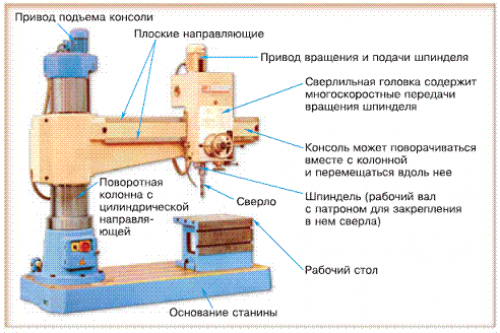
A fixed vertical screw-column is attached to the base of the machine. By turning the handle, you can move the spindle head up or down along the screw, the second handle is used to fix it in the required position. The depth of the blind holes is controlled using the provided scale.
Depending on the workpiece material, different drilling speeds are required. To do this, it is customary to set a certain spindle speed by transferring a belt drive to pulleys of various diameters. In the shops of factories, more complex schemes of drilling machines are used than have just been considered.
The principle of the machine
Before drilling with a homemade machine, you need to remove all unnecessary from the desktop. The workpiece with the marked hole centers must be clamped in a vise. Next, insert a drill of the required diameter into the chuck and fix it with a special key. To check the correctness of the work carried out, the machine is turned on for a while.
If you have positioned the drill correctly, the tip will not circle as you rotate it. If it is installed skewed and it beats, then the drilling machine must be turned off and the drill must be fixed according to the instructions of the drilling machine. Then turn the feed handle, lower the drill and set the vise with the workpiece in such a way that the core coincides with the tip of the drill.
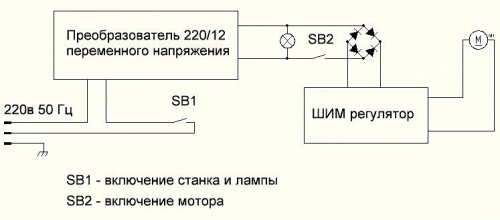
Turn on the machine and drill a hole, press the feed handle smoothly, without much effort or jerking. When drilling a through hole, place the workpiece on a block of wood so that the drill does not break and the machine table does not deteriorate.
When drilling a deep hole, from time to time remove the drill from the hole and cool it by dipping it in a bowl of coolant. It is recommended to reduce the pressure on the handle at the end of drilling. After drilling a hole, smoothly turn the feed handwheel, lift the spindle to the uppermost position and turn off the machine.
Drilling machine manufacturing
The drilling machine is easy to make with your own hands. In everyday life, it is beneficial to have devices and tools on hand for performing carpentry and locksmith work. After the obsolescence of many household appliances in the arsenal of the owners, there are many useful spare parts and electric motors, from which you can, if desired, make such useful equipment as a drilling machine.
Drill boring machine
The easiest solution for you is to assemble a mini drilling machine with your own hands using a drill. The drill is lightweight, so the rack can be made of chipboard, planks or sheet metal. For comfortable work on such a home-made machine, it is necessary that it turns out to be quite massive to absorb the vibration of the drill and sufficiently stable.
It is important to get a right angle between the holder and the base. Usually the drill is attached with two clamps (it is better to place a rubber gasket between the clamp and the drill) to the board, which moves along the guides that are fixed on this movable board and on another stationary board. The downward and upward movement of the movable board is controlled by a lever associated with it.
The downward movement of the lever can be limited by a bar supporting the lever in the lower position. The fixed board is attached to the horizontal pipe through the flange. A horizontal pipe is attached through a square to a vertical pipe, which is attached through a flange to the base of the machine (to a thick wide board) or to a workbench.
The height of the block, which limits the lower position of the lever, is adjusted, which allows you to change the drilling depth. Make 4 holes in the movable board to accommodate the drill collars. On its side, which faces the stationary board, narrow slats are glued, which are lubricated for better sliding with wax.
The drill, in addition to clamps, is fixed with two rods that support it from below. Since with such a fastening, the shape of the drill does not strictly ensure the vertical position of the drill, you need to glue a rail to the board to compensate for this.
To ensure the free running of the drill, the guides must be prepared strictly in the vertical direction. They can be metal profiles made of aluminum, which are screwed with threaded screws to the boards along the entire length. Having assembled a strong and stable structure, it is necessary to fasten the profile guides strictly perpendicular to the base plane and parallel to each other.
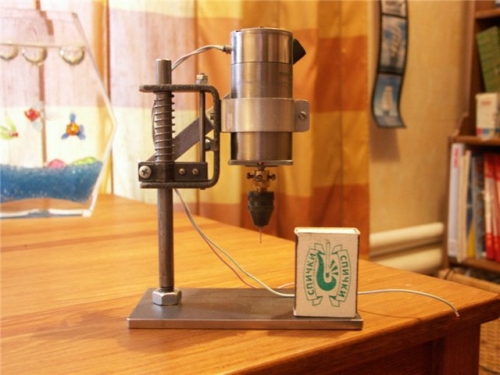
In the photo of self-made drilling machines, the attachment points to the moving platform of the drill and the method of mounting the guide profiles are clearly visible. The guides must ensure a high-quality pressing of the movable to the stationary board. The main condition for this is the absence of distortions and backlash.
When assembling the lever, remember that you cannot tighten the moving parts; it is customary to use a second nut to lock the nuts. The rail that leads to the movable board from the lever should be rounded at the end. After reducing the pressing forces, to automatically raise the drill to the upper position, it is necessary to put the springs to squeeze or stretch.
One end of the spring is attached to the horizontal pipe with wire, and the other end is attached to the bottom of the movable board. When the spring is not flexible enough, and the stationary board interferes, then this is done through the string.
The machine from the motor from the washing machine
The drawing of a drilling machine, which is assembled on the basis of a motor from a washing machine, differs from the one discussed above in the most complex mechanics and type of electric drive. An asynchronous motor from an old washing machine is heavier and has more vibration. The shaking will be stronger the further from the rack the engine is located.
Intense vibration will cause inaccurate drilling and drill breakage. There are two ways out - to make a powerful bed, so that when the drill is lowered, the drive is also lowered, or the motor is placed motionlessly closer to the holder stand, then only the working part of the drilling machine will walk.
The second way involves more complex execution. Here you need a pulley and a belt that allow you to adjust the speed of rotation. There are many solutions without a belt drive with a drive positioned against the wall. They are much easier to assemble, but the assembly that will be discussed below is characterized by a non-standard approach, and certain techniques used may be useful.
![]()
The vibrations still remain, but they are so minimal that when drilling iron with a 0.7 mm drill, the drill remains intact. At home, you can only dream of high precision in the manufacture of such mechanisms, you still need to strive for the maximum fit of parts. The characteristics of the drilling machine and its performance will depend on this.
The moving part of the machine consists of an axial hexagon, a tube of a suitable size, a clamping ring and two bearings and a tube with an internal thread for fixing the chuck. On the hexagon, part of the future transmission system, a pulley is subsequently put on. The pipe must first be cut with a grinder along both ends, and make the cuts on top deep enough to ensure reliable adhesion to the hexagon.
The entrance must be made tight, hammer in. If donning takes place without much effort, then it is necessary to pick up another tube. Then pack the compression ring and bearings. The height adjustment system consists of a pipe with notches and a gear. To make the cuts accurately, you need to roll out the plasticine and drive it with a gear.
A print will appear that is easy to measure and make the appropriate markings on the control pipe. The length of this ladder should correspond to the maximum height to which the drill can be raised. Press axle with hexagon and bearings into slotted tube.
Such a structure will walk back and forth vertically in the stationary tube of the bed when the gear turns. At the same time, the axis rotates in the horizontal plane through a belt drive. The bed is made of a metal corner with bolts. The entire structure is attached to the wall.
And finally, remember that the first option for assembling a drilling machine is preferable. The proposed second assembly option can be supplemented or improved. However, such a simplified solution deserves attention.
The miniature drilling machine, despite its miniature dimensions in comparison with other machines, perfectly fulfills the tasks assigned to it, not inferior in the quality of work to large machines. Some bench-top machines also have milling functions and are often used in repair shops or educational institutions. Mini drilling machines are used to drill holes in microcircuits, as well as boards.
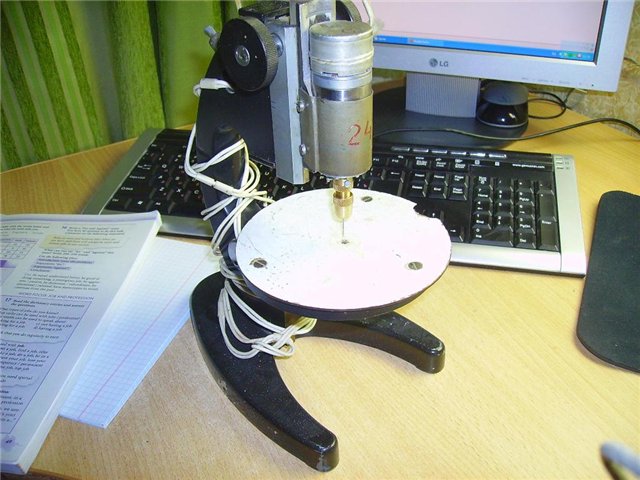
The rotation of the drill is the main movement that is used in the work of the drilling machine. The drill holds the spindle. The drill feed is carried out in a vertical plane, and the part itself is located on the work table.
All elements of the drilling machine are located on a stand placed on a massive bed, which is the base. The working head with the spindle moves along the rails, and the engine is located in the column. In the event that it is possible to switch the speed, then this is done using the buttons on the handle. In modern units, these parameters are monitored by an electronic system.
The working head is necessarily lubricated with oil, which is supplied to it using a pump (the pump also supplies a cooler for the head). The working head is made mainly of cast iron. The head usually contains a feed and speed device. The gearbox works with gears that are shifted by a handle. The mini drilling machine works from a standard household network with a voltage of 220V.
Mini Drilling Machine Operation

When the machine is turned on, the spindle starts to move. Power bench machine can be from 150 to 300W. Mostly belt drive is used, but on very small units a gear system can also be used. The feed rate is changed with the handle.
The working element, the drill, is inserted into the chuck (collet or cam), with which its end is firmly clamped. In the collet chuck, the drill is clamped automatically, and in the jaw chuck with a key.
With the help of the feed handle, the drill is lowered to the material being processed. The handle looks like a lever and is usually located to the right of the head. Thanks to the built-in spring, after drilling the hole, the head returns to its original position by itself. Also, in some machines, the head can be fixed in a certain position.
Machine characteristics
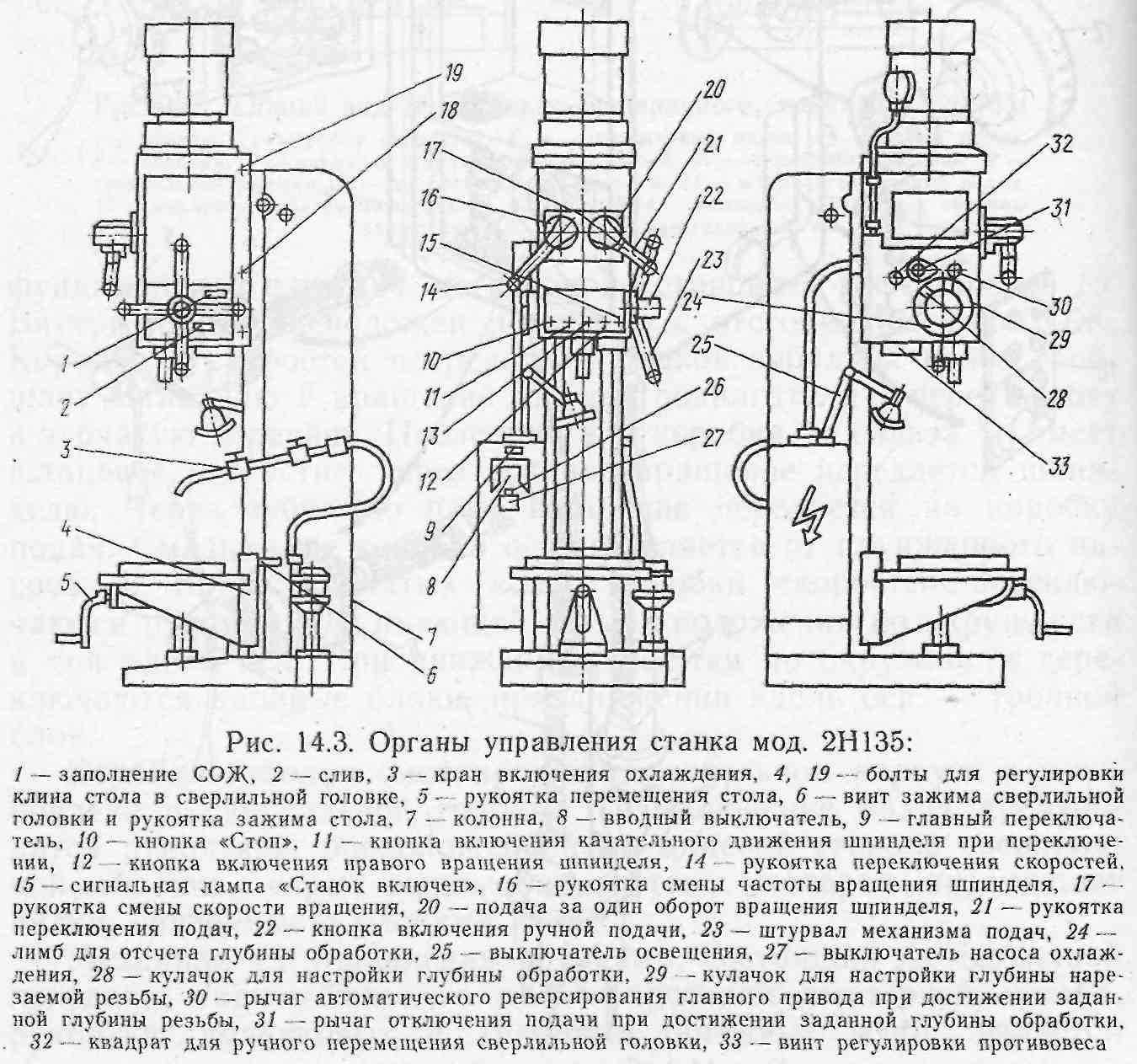
An important parameter that affects performance and economy is power. Minimum power for non difficult work- drilling holes for printed circuit boards, is 150W.
The drill rotates from 200 to 3000 rpm. This happens thanks to the gearbox, which gives the master 12 speed modes.
50 centimeters is the maximum height of a part that can be used to work with a mini drilling machine. The drill head moves vertically along the rails, this happens as a result manual control and, having reached the desired height, the head is fixed.
You can make a homemade miniature drilling machine yourself, with your own hands. Often, the need to create this unit arises when the need for drilling holes periodically arises, which is often the case for radio amateurs, since they need an apparatus for drilling printed circuit boards. It is worth saying that a homemade mini machine can have high level work, but only if everything is done correctly and correctly.
It is worth saying a few words about printed circuit boards. Drilling holes for printed circuit boards is a tedious task, since the hole diameter is very small. Therefore, on an industrial scale, laser equipment is increasingly used to drill boards, but for an ordinary radio amateur, a home-made drilling machine with small diameter drills may also be suitable for processing boards.
Homemade mini drilling unit from a drill
In order to make a homemade mini machine, you do not need to have special components or materials. The entire structure of this unit consists of the following components:
- The bed, which is the base.
- Working element rotation mechanism.
- Feeder.
- A vertical post to which the rotation mechanism is attached.
The bed for a homemade apparatus can be made of wood, you can also use chipboard. The only thing to consider in creating the bed is that during operation the home-made unit can vibrate, so the base must be heavy enough so that there is no unwanted vibration.
The quality of work will directly depend on the reliability of fastening the bed to the vertical rack. Important details that a home-made drilling unit should have are guide rails along which the working mechanism will move (in our case, with a drill). It is best to make the guide rails from two steel strips, which must be fixed to the rack.
When creating pads with your own hands, you can use steel clamps. They will securely attach the drill to the shoe. In order to avoid unwanted vibration, a rubber gasket can be placed at the junction of the drill and the shoe.
The next step is to create a feed mechanism that is supposed to move the drill in a vertical position. There are plenty of options for making a do-it-yourself feed mechanism and circuits, but usually it consists of a lever and a spring, which is attached on one side to a block with a drill, and on the other to a bed. The spring allows you to make the feed of the mechanism more rigid.
If you do not need a drill for further operation, you can disassemble it and make the unit more convenient. To do this, you need to remove the switch from the drill and make a separate button attached to the bed. This button will always be under your control and will give you the opportunity to turn off the drill in time. That's all, making a mini drilling machine with your own hands is not difficult, just watch a video and a photo on the Internet, in which the whole process of creating a machine from a drill with your own hands is perfectly shown.
Mini drilling machine W10005
Amateurs and professionals often have to work with drilling machines at home, in their workshops. Often it is also necessary to drill a very small hole diameter, for example 0.3mm. The W10005 mini drilling machine is ideal for such cases. The idle speed reaches 2000 rpm and is ideal for drilling in wood, soft aluminum, brass, copper, plastic and other soft, non-ferrous and precious metals.
The content of the article:
Amateur radio is a multifaceted occupation, for some it is a simple repetition of other people's schemes, to obtain moral satisfaction, for some it is a sport, for someone the development of intellectual abilities, and for whom it is creativity, the embodiment of ideas and intentions, self-affirmation. But be that as it may, this process is closely related to the mechanical perforation of foil-clad material, be it textolite, getinax or fluoroplastic. Of course, our (and Chinese) industry produces a lot of products that can make 1-2 holes before breakage, but we, radio amateurs are creative people, and we will not get hung up on other people's buzzers and buzzers, but we will try to make our own, which is warmer and more reliable for the soul. ... However, the question arises, what to do? And on what? Not every radio amateur has a workshop stuffed with machine tools and materials at his side, and the specialists have now become different, you can't get off with a bottle.
But it was a saying, now in essence. Faced with the aforementioned problem, the idea arose to assemble a drilling machine that could be made even without a special tool. Not that there was nothing to drill with - I have been drilling for a long time, about 30 years, I tried many hand drills, but when I was faced with the need to make an adapter board with many sockets, I decided to make a machine that would greatly simplify and speed up this business. The first thing that came to mind was to google the internet. For almost a week, on slow traffic, I leafed through what I found, but I did not come across anything suitable, or rather I came across a lot, but one did not suit because of the need to break the microscope, which, moreover, was not yet available, the other was too primitive, the third required special equipment.
Here, for example, is a machine that I liked because of its design, but frightening because of the complexity of its manufacture. Having seen enough of other people's designs, I decided to connect the brain bone and make something from the available materials. In general, let me present to your attention a radio amateur drilling machine with, available for repetition with minimal experience in assembling such devices.
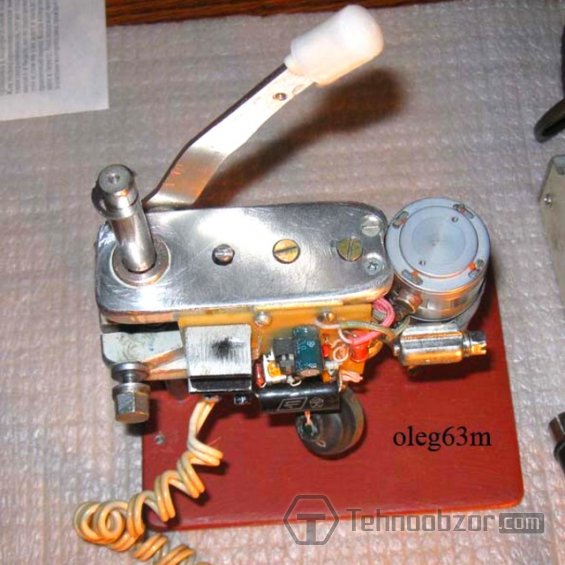
Drilling machine bed
First of all, the bed, the basis of any machine. It must be strong and stable. The choice fell on the gland. there was none, so I had to ask for a cut in the workshop. The guide rod used from a broken printer. Slightly cutting off with a "grinder" welded to the bed through a pre-drilled hole. To reduce friction, I used bushings from the same printer, but this is not necessary.
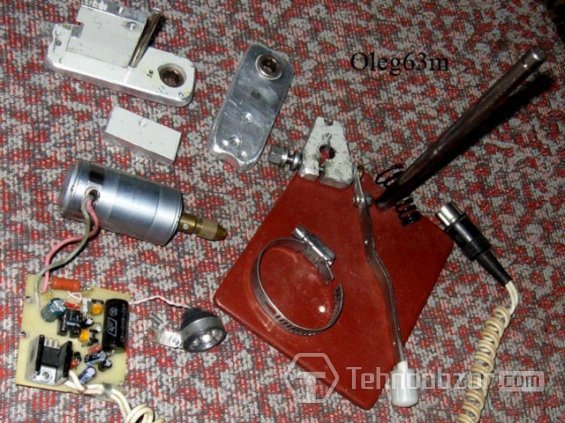
So, the first thing that caught my eye, once found on scrap metal (then they had not yet swept so carefully) duralumin panel, 8 mm thick from some disassembled device, it suited me, but it was necessary to cut it into narrow strips. I loaded a new blade into a hacksaw for metal, an oiler so that the teeth did not get clogged and forward, sawed the strips, first of all, folding the upper and lower strips and clamping them firmly in a vice drilled holes for the rod. then, inserting the rest of the stem into this hole (so that there is no displacement), drilled the remaining holes.
The next step was to insert a cross-brace, drill holes in it and cut a thread. Having fastened the upper, lower planks and the transverse brace with screws already through the standard holes, proceed to the longitudinal brace. We drill it in the same way as the transverse one, in place through the existing holes in the planks. We watch and do the rest, according to the drawings.

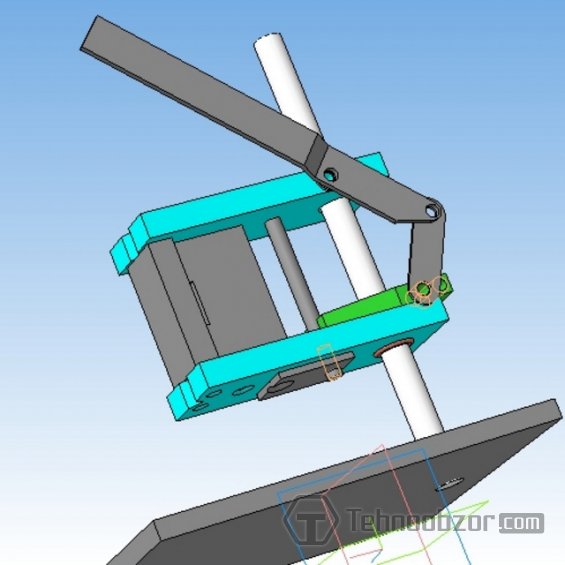
I want to note that here it is not necessary to use the materials that I used. Several of my friends repeated this design, using plexus, an iron bar for welding, and even wood, and they all worked great. I will add for accuracy, the return spring was used from the desoldering pump, and the backlight was from an LED flashlight key fob.
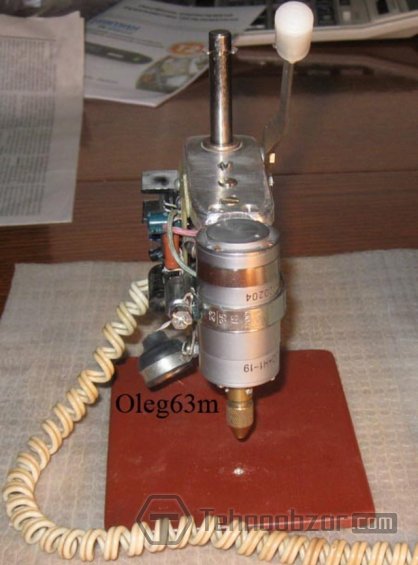
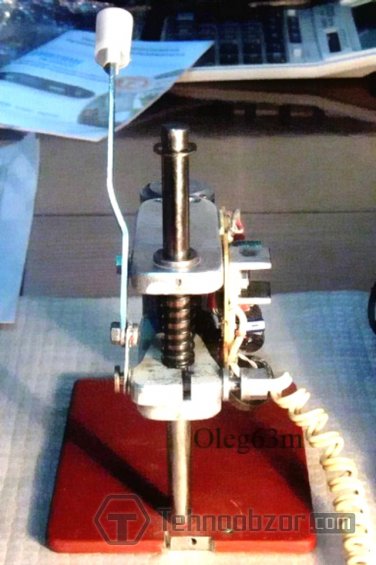
Drilling machine electric motor
With the mechanics finished, now the heart of any machine is a fiery motor. In my design, his name is DPM30-n1-19, but in principle it does not matter, you can use others. We will not heat it up to the flame, so we will use the speed controller. Here I will not give advice, how many people, how many opinions. Some like to drill, so that with a constant moment, others - with a stop for "aiming", and still others somehow. At first, I was also a supporter to put the drill at the drilling point and then turn it on smoothly. Convenient and neat if you drill in your hands. But we have a machine. First I tried it without a regulator, at a stable speed. If the drill "beats" a little, the picture is deplorable. But the drills, what they are, sometimes you do not have to choose, so I decided to try a scheme that I found on one radio site, with positive feedback.
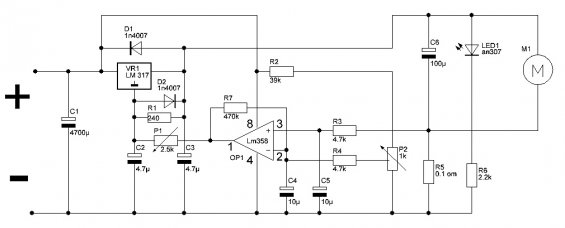
The essence of the process is that when there is no load on the drill, it rotates at a low speed (about 300 rpm), and when you press it, the load on the drill increases and the maximum speed is turned on. This method of control seemed to me (and not only) to be the most effective. The printed circuit board has been redesigned to fit its own dimensions.
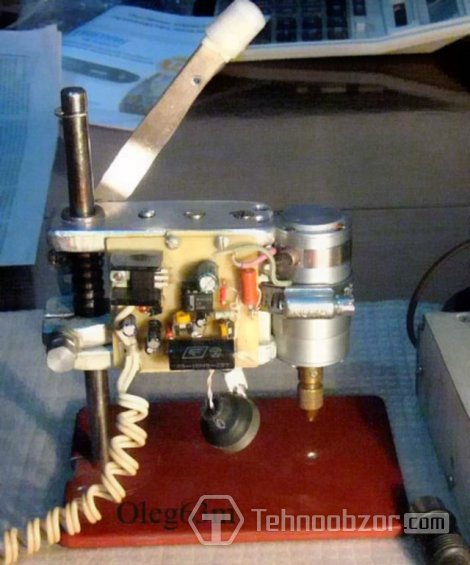
Any power source of suitable power and voltage can be used to power the device. I used a power supply unit from the same printer, slightly modifying it so that the output voltage could be changed. It can then still be used to connect, say, a soldering iron or other devices, for a more complete use of the IP. Video demonstration of the device:
After the demonstration on youtube, Viktor Stepanovich Semenchuk contacted me by e-mail, with a proposal to make high-quality drawings in Compass in exchange for freehand drawings with dimensions, which he did, thank him very much for this. File to PDF. The file in Compas format can be obtained from the author (Victor Stepanovich) or from me :)
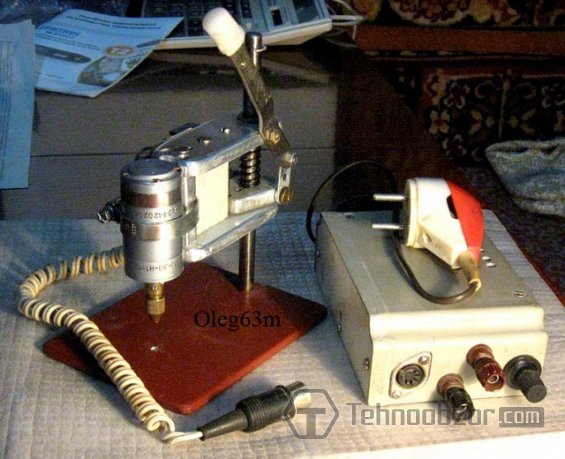
I hope my simple design will please both radio amateurs and the administration of Technoobzor :) Ask questions on the forum. Best regards, Oleg63m.
Watch the video on how to make a drilling machine with your own hands:

